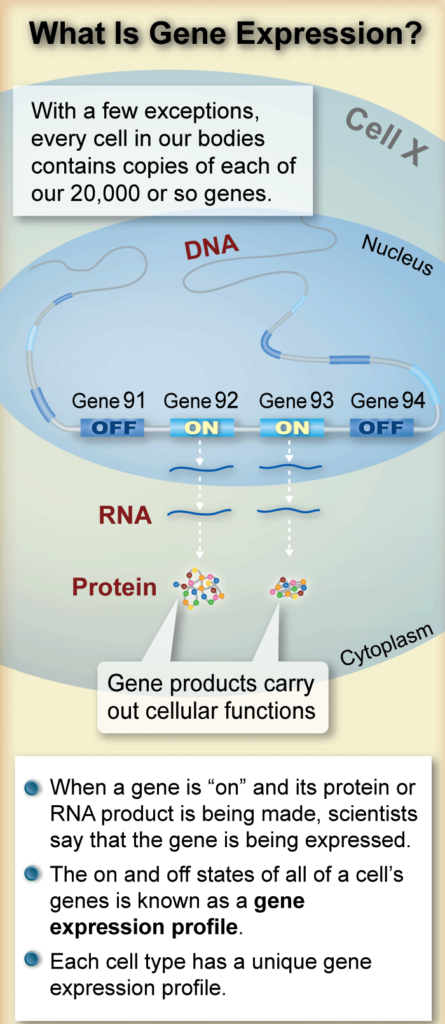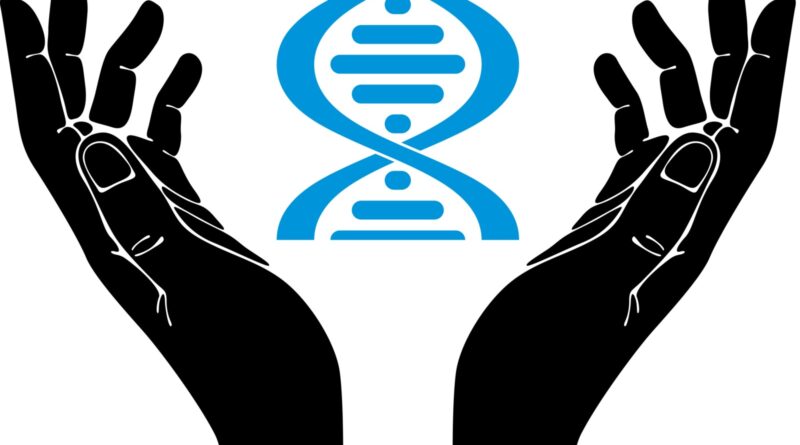Genetic Testing for Nutritional Intervention
On this page
Eating for health is one of the most important ways to take care of body and mind! In this article, we discuss genetic testing for nutritional intervention personalization. Application of fascinating nutrigenomics conclusions in day-to-day wellness practice provides the most effective approach to achieving the individual health goals.
Take a minute to review and find vitamins deficiencies – they may be a root cause of the symptoms, intolerances, and other health problems!
Nutritional Intervention in Wellness Practice: Food for Thought
Eating for health is one of the most important ways to take care of body and mind. Nutritional science enables an arsenal of tools and techniques to identify and support achieving the desired health results via nutritional interventions. Thus, nutritional therapy that enhances nutrition according to the health goals is a very powerful tool for disease prevention and management.
Nutritional Intervention: How to Choose a Diet (and Not to Fail)
To tell the truth, the majority of the population perceives eating for health as almost exclusively a selection of a fad diet. New diets pop up and get advertised almost every day. Usually, the diet becomes popular after anecdotical reports of the success of several individuals. There is even a term “battle of diets”!
Wellness professionals understand that there is no, unfortunately, “one-size-fit-all” diet. In general, dietitians have a list of diets that can be chosen based on a reliable medical diagnosis, using, for example Dr. Liz Lipski framework 1. This framework still includes significant amount of guesswork. Besides, what if there is no disease to diagnose, or the goal is an individual targeted preventative management?
Let’s imagine, for instance, that we have a client suffering from infertility. We also figured out using Nutri-IQ tool that she is experiencing nutritional deficiency, say is low on folate and vitamin B12 despite eating healthy food and a carnivore diet. Like in many similar cases, before suggesting enhancements to the client’s eating habits and meal plan, we need to gain understanding of why she is low on this specific nutrient.
Who is at Fault?
We could easily explain the root cause of client’s problems if we knew that she has methylenetetrahydrofolate reductase (MTHFR) C677T gene mutation and thus is not able to control distribution of folate and vitamin B12 along metabolic pathways 2. In other words, we know that the client is inherently deficient in vitamin B12 and unlikely would change her nutritional status with food consumption.
Since vitamin B12 deficiency is one of infertility causes3, client’s genetic problem may lead to costly, lengthy, and frustrating infertility treatments. But we can prevent this by a successful nutritional intervention!
Before recommending supplementation though, we also would need to understand if her GI tract is able to process supplements and if vitamin B12 can be transported from supplements to body cells.
The way to ensure that the client meets her goal to become a mother is genetic (sometimes called DNA) testing.
Genetic testing usually refers to the analysis of DNA to identify changes in gene sequence (deletions, additions or misspellings) or expression levels. Genetic testing can also refer to the analysis of RNA to determine gene expression, biochemical tests for the presence of gene products (proteins) and for microscopic analysis of chromosomes 4.
Nutritional Intervention: Success Factors
DNA testing can provide answers to a multitude of questions. From nutritional intervention standpoint, Wellness professionals benefit from genetic and epigenetic clarification of the gene expression in following areas:
- clues about gut health,
- exercise response,
- supplement response,
- stress response,
- possible nutrient deficiency,
- weight loss response.

To achieve the best and most consistent results and eliminate guesswork, Nutri-IQ recommends utilizing a protocol involving analysis of existing client’s information along with novel testing methods, similar to the one depicted below.

The success of this (or any other nutritional intervention) protocol depends on 2 factors:
- Nutritional intervention is personalized for the specific person to deliver the best results possible
- Behavioural changes (i.e. dietary habits and exercise involvement) are sustainable
Personalizing Nutrition with Genetic Testing
The term “Personalized medicine” has recently widespread. It is mostly due to the proliferation of computer methods that provide an understanding of the genetic basis of health problems, and a clear evidence base enabling patient groupings5. Personalization is based on a set of biomarkers and provides unique possibility to predict an intervention outcome for an individual possessing a unique combination of these biomarkers.
Why Use Genetic Testing for Nutritional Interventions?
Well, for the same reason patterns are used to sew individual clothes: to increase the accuracy of recommendations. There is a huge probability of error and even harm to one’s health, such as multiple deaths in a seemingly innocent probiotic study for acute pancreatitis6, if personalized nutrition route is not well substantiated.
Humans have between 20,000 and 25,000 genes 7. Whereas most genes are the same in all, less than 1% are slightly different between people. Alleles (small differences in genes sequence of DNA bases) contribute to each person’s unique physical features and physiological responses which are studied and mapped by nutrigenomics8.
How to Substantiate Nutritional Intervention with DNA Testing?
Nutritional genomics, also known as nutrigenomics, is a science studying the relationship between human genome, human nutrition and health9. Nutrigenomics can substantiate nutritional recommendations the same way Pharmacogenomics enables precision approach to healthcare10.
The arrival of Nutrigenomics established the common frame of reference for dietary recommendations. It is a predictive relationship between our genetic makeup revealed by DNA testing, and nutritional interventions. It selects the DNA makeup as a set of non-diagnostic parameters that are scientifically/statistically substantiated based on massive control studies.
With large and reliable cohort studies that scientists conduct all over the world, Nutrigenomics identified external factors, i.e. dietary interventions, which may positively or negatively affect gene expression. Then, it mapped our health (genetic factors) and intervention outcomes (epigenetic factors) to the specific genes.
That’s how our genetic makeup establishes a unique but comparable frame of reference. Using this frame of reference, we can adjust a dietary intervention, to provide reliable and speedy preventative and even therapeutical results .

Shaping Psychological Response to Nutritional Intervention
Psychologically, people stick to a change if they are ready and willing to undergo the change process, see expected results, and the change process is not overwhelming. The same applies to nutritional intervention sustainability.
Nutritional intervention needs the client’s motivation and change readiness. It utilizes the fact that people are hungry and motivated to learn more about themselves. Apple Watch can now take an electrocardiogram, measure heart rate and call 911 in case of a fall. As a result, Apple Watch outsold the entire Swiss watch industry in 2020, according to Strategy Analytics 11! Genetic testing results can satisfy the same hunger by providing a wealth of information about self-health and possible health risks.
Benefits of disclosure of the genetic makeup data for the dietary interventions were the subject of several studies, for instance 12.
The study concluded that DNA-based dietary advice and knowledge of individual genetics provided better results than traditional consulting practice, increased motivation and change readiness, and improved long-term, at least 18 months-long dietary compliance, compared to generalized one-size-fit-all recommendations.

Another psychological aspect of sustainable change is its perceived simplicity. If dietary changes consist in extension of the diet, rather than further constraints, clients perceive the change as positive. Multiple dietary studies concluded that focusing on what people can add to their diets, especially according to their DNA profile, rather than on what needs to be excluded, leads to better and more sustainable results13.
Accuracy, Risks, and Benefits of Genetic Testing
In this article, we focus mostly on direct-to-consumer (DTC) at-home genetic testing (as opposed to clinical testing). DTC testing allows consumers to conduct DNA tests themselves, primarily health and trait-related or genealogical/ancestry-related 14.
DTC genetic tests are more affordable than clinical tests, at a price range from under $100 to more than $2,000. The price depends on the complexity of the test. However, consumers very often question comparative tests accuracy, as over 75,000 genetic tests are available on the market15. Unfortunately, accuracy of the tests may vary, from 60% to 99.9%, and very often is in direct relationship to the price point.
According to the US National Institutes of Health16, DTC genetic testing has both benefits and limitations, although they are somewhat different than those of clinical genetic testing ordered by a healthcare provider.
Benefits of DTC Genetic Testing
- DTC provides personalized information about specific person’s health, disease risk, and other traits.
- DTC may help to take preventative steps towards better health.
- DTC does not require approval from a healthcare provider or health insurance company.
- DTC is cheaper than genetic testing obtained through a healthcare provider.
- DNA sample collection is usually simple and noninvasive, results are available quickly, and privacy safeguarding can be requested (though specific patient’s data maybe added to a large database that can be used to further medical research).
Risks and Limitations of DTC Genetic Testing

- Tests may not be available for some health conditions or traits of interest.
- It is not a diagnostic testing.
- Unexpected information about health, family relationships, or ancestry may be stressful or upsetting.
- People may make important decisions about disease treatment or prevention based on inaccurate, incomplete, or misunderstood information from their test results.
- There is currently little oversight or regulation of testing companies.
- Unproven or invalid tests can be misleading. There may not be enough scientific evidence to link a particular genetic variation with a given disease or trait.
- Genetic privacy may be compromised if testing companies use genetic information in an unauthorized way or if data is stolen.
- The results of genetic testing may impact patient’s ability to obtain life, disability, or long-term care insurance.
- Other genetic and environmental factors, lifestyle choices, and family medical history may also affect the likelihood of developing many disorders.
Choosing Genetic Testing Company

According to the US National Institutes of Health17, the following questions can help assess the quality and credibility of a genetic testing company:
- Does the company’s website appear professional? Does the company provide adequate information about the services it offers, including sample reports, pricing, and methodology?
- Does the company have experienced genetics professionals, such as medical geneticists and genetic counselors, on its staff? Does the company offer consultation with a genetics professional if you have questions about your test results?
- Does the company explain which genetic variations it is testing for? Does it include the scientific evidence linking those variations with a particular disease or trait? Are the limitations of the test and the interpretation of results made clear?
- What kind of laboratory does the genetic testing, and is the laboratory inside or outside the United States? Is the laboratory certified or accredited? For example, does the laboratory meet U.S. federal regulatory standards called the Clinical Laboratory Improvement Amendments (CLIA)? Is the test approved by the U.S. Food and Drug Administration (FDA)?
- Does the company indicate how it will protect privacy and keep your genetic data safe, including both current privacy practices and what may happen in the future?
- Does the company indicate who will have access to your data and how it may be shared?
Answering these questions may be a task of its own.
Who’s the Best?
Epigenetic tests from Canadian research company Nutrigenomix examine your genes to determine if they can trigger food intolerances and other problems, like faulty methylation. These epigenetic tests are the BEST on the market; the only genetic tests validated by published randomized controlled clinical trials18!
Nutrigenomix provides:
- analysis of 77 genes and more than double polymorphisms (most companies do 30 genes and about 100 polymorphisms)
- insights into methylations and asthma/allergy specifics (MTHFR, COMT, GST, NOS3 genes)
- insights into nutrient metabolism, food intolerances and sensitivities, and drug effectiveness
- insights into pharmacogenomics (prognosis of medication response based on genetic profile)
- confirmed 99% accuracy of the tests (most companies do not confirm accuracy)
- analyzed in Toronto lab using state-of-the-art genetic testing procedures
Conclusion
Wellness professionals need to keep in mind that DTC genetic testing is not a diagnostic procedure, but a very useful tool for preventative health measures. In most cases, the link between a given genetic variation and a complex trait like weight management, sleep, or athletic performance19 is indirect or unknown to a genetic consultant. Therefore, the results of these tests can be challenging to interpret without algorithms developed by the genetic test provider. Any training or guidance that a genetic testing company may provide will serve a good service for the success of the Wellness practice clients.
Appendix: Other Applications of Genetic Testing
Genetic testing can provide information about a person’s genes and chromosomes. According to 20, available types of testing include:
Newborn screening
Is used just after birth to identify genetic disorders that can be treated early in life. In the USA, all the infants are tested at least for phenylketonuria and congenital hypothyroidism.
Diagnostic testing
Is used to confirm a diagnosis when a particular condition is suspected based on physical signs and symptoms. Diagnostic testing can be performed before birth or at any time during a person’s life, but is not available for all genes or all genetic conditions. The results of a diagnostic test can influence a person’s choices about health care and the management of the disorder.
Carrier testing
Is used to identify people who carry one copy of a gene mutation that, when present in two copies, causes a genetic disorder. This type of testing is offered to individuals who have a family history of a genetic disorder. When both parents are tested, the test can provide information about a couple’s risk of having a child with a genetic condition.
Prenatal testing
Is used to detect changes in a fetus’s genes or chromosomes before birth. This type of testing is offered during pregnancy if there is an increased risk that the baby will have a genetic or chromosomal disorder. In some cases, prenatal testing can lessen a couple’s uncertainty or help them make decisions about a pregnancy. It cannot identify all possible inherited disorders and birth defects, however.
Preimplantation testing, also called preimplantation genetic diagnosis (PGD)
Is a specialized technique that can reduce the risk of having a child with a particular genetic or chromosomal disorder. It is used to detect genetic changes in embryos that were created using assisted reproductive techniques such as in-vitro fertilization. To perform preimplantation testing, a small number of cells are taken from the embryos and tested for certain genetic changes. Only embryos without these changes are implanted in the uterus to initiate a pregnancy.
Predictive and presymptomatic types of testing
Are used to detect gene mutations associated with disorders that appear after birth, often later in life. These tests can be helpful to people who have a family member with a genetic disorder, but who have no features of the disorder themselves at the time of testing. Predictive testing can identify mutations that increase a person’s risk of developing disorders with a genetic basis, such as certain types of cancer. Presymptomatic testing can determine whether a person will develop a genetic disorder, such as hereditary hemochromatosis (an iron overload disorder), before any signs or symptoms appear. The results of predictive and presymptomatic testing can provide information about a person’s risk of developing a specific disorder and help with making decisions about medical care.
Forensic testing
Uses DNA sequences to identify an individual for legal purposes, not to detect gene mutations associated with a disease. This type of testing can identify:
- crime or catastrophe victims,
- rule out or implicate a crime suspect,
- establish biological relationships between people (for example, paternity).
References
- Innovative Healing Academy. Accessed on May 9, 2021
- Juan Ni, Ling Zhang, Tao Zhou, Wei-Jiang Xu, Jing-Lun Xue, Neng Cao, Xu Wang (2017) Association between the MTHFR C677T polymorphism, blood folate and vitamin B12 deficiency, and elevated serum total homocysteine in healthy individuals in Yunnan Province, China, Journal of the Chinese Medical Association, 80:3, 147-153, https://doi.org/10.1016/j.jcma.2016.07.005.
- Irene La Vecchia, Alessio Paffoni, Marta Castiglioni, Stefania Ferrari, Renata Bortolus, Chiara Ferraris Fusarini, Nora Bettinardi, Edgardo Somigliana & Fabio Parazzini (2017) Folate, homocysteine and selected vitamins and minerals status in infertile women, The European Journal of Contraception & Reproductive Health Care, 22:1, 70-75, DOI: 10.1080/13625187.2016.1263292
- AMA. Genetic Testing. Accessed on May 12, 2021.
- Wikipedia. Personalized medicine. Accessed on May 9, 2021
- Tarasenko, V.S., Stadnikov, A.A., Nikitenko, V.I. et al. Experimental validation of efficiency of probiotics in combined therapy of destructive pancreatitis. Bull Exp Biol Med 129, 176–178 (2000). https://doi.org/10.1007/BF02434804
- US NIH Medline. What is a gene? Accessed on May 10, 2021
- Kauwell, Gail. (2005). Emerging Concepts in Nutrigenomics: A Preview of What Is to Come. Nutrition in clinical practice: official publication of the American Society for Parenteral and Enteral Nutrition. 20. 75-87. 10.1177/011542650502000175.
- Wikipedia: Nutrigenomics. Accessed on May 10, 2021
- AMA: How pharmacogenomics enables precision approach to care Accessed on May 12, 2021
- Market Watch. Want to know the best diet for your body? Accessed on May 11, 2021
- Vranceanu, M., Pickering, C., Filip, L., Pralea, I. E., Sundaram, S., Al-Saleh, A., Popa, D. S., & Grimaldi, K. A. (2020). A comparison of a ketogenic diet with a LowGI/nutrigenetic diet over 6 months for weight loss and 18-month follow-up. BMC nutrition, 6, 53. https://doi.org/10.1186/s40795-020-00370-7
- St. Michael’s Hospital. Introducing Portfolio Diet. Accessed on May 12. 2021
- Wikipedia. Genetic testing. Accessed on May 12, 2021
- 10 New Genetic Tests Reach the Market Each Day. Medscape. Accessed on May 10, 2021.
- MedlinePlus. What are the benefits and risks of direct-to-consumer genetic testing? Accessed on May 9, 2021
- MedlinePlus. How do I choose a direct-to-consumer genetic testing company? Accessed on May 11, 2021
- Nielsen DE, El-Sohemy A (2014) Disclosure of Genetic Information and Change in Dietary Intake: A Randomized Controlled Trial. PLoS ONE 9(11): e112665. https://doi.org/10.1371/journal.pone.0112665
- Roth SM. Critical overview of applications of genetic testing in sport talent identification. Recent Pat DNA Gene Seq. 2012 Dec;6(3):247-55. doi: 10.2174/187221512802717402.
- MedlinePlus: What are the types of genetic tests? Accessed on May 8, 2021
